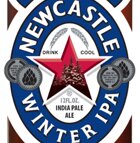 A few weeks back, Nate and I received some free beer in the mail. Not a bad deal at all. In fact, other brewers can take this as their cue to go ahead and send some our way. At any rate, I like to note up front that I am reviewing a beer I received courtesy of Newcastle. Don’t let that fool you, however—I intend to be honest about what I’m tasting.
A few weeks back, Nate and I received some free beer in the mail. Not a bad deal at all. In fact, other brewers can take this as their cue to go ahead and send some our way. At any rate, I like to note up front that I am reviewing a beer I received courtesy of Newcastle. Don’t let that fool you, however—I intend to be honest about what I’m tasting.
Let me first note that this beer is a British IPA. If you are expecting floral American hops redolent of grapefruit, apricots, citrus tones, etc…well, don’t. The beer simply isn’t that. That fact alone might draw some bad reviews and criticism from others, but let’s think about the beer for its intent and not our preferences. Trust me, this is a whole sub-discussion that I intend to write about in the near future. Enough with the discussion of what the beer isn’t. Here’s what it is:
Winter IPA by Newcastle is firmly British. It is darker in color than many IPAs that we are used to seeing…but not overly so. The hops are definitely European. If you drink your beer staggeringly cold, you will likely not appreciate hops as well as if you let it warm up a bit. My opinion is that I’m tasting Goldings or Fuggles, but I can’t put my finger on it exactly. I’m leaning toward Goldings because of the tea aroma that I tend to associate with that hop. At any rate, I’ve seen some complaints about the beer’s lack of hoppiness, which shows how Americanly some of us view IPAs. Just be ready for earthy and not flowery.
Some touches of burnt sugar and toffee notes are on the nose. I also catch a bit of cocoa and caramel. As far as taste goes, the beer is metallic and lingeringly bitter. The features from the nose noted above carry over to the flavor profile, but I would also like to state another quality about the beer: there seems to be a nuttiness and roasted quality that I associate with home roasted pumpkin seeds. I know that sounds a bit like farce, but that’s the best way I can think to describe it. Additionally, the finish reminds me of eating a candy like Sweet Tarts or Smarties. It has a certain juiciness and candy-like touch. Perhaps a caulky yeast bite on the finish should be noted as well.
Okay, now that I’ve offered my descriptive experience that will sound like lunacy to some, what can you actually take away about the beer? It’s worth trying. It is worth not settling into the rut of drinking massive American IPA after massive American IPA (although I myself love the style) and moving toward something a bit more traditional and subtle. My opinion is that it is drinkable and enjoyable. Pick some up and let me know what you think.








